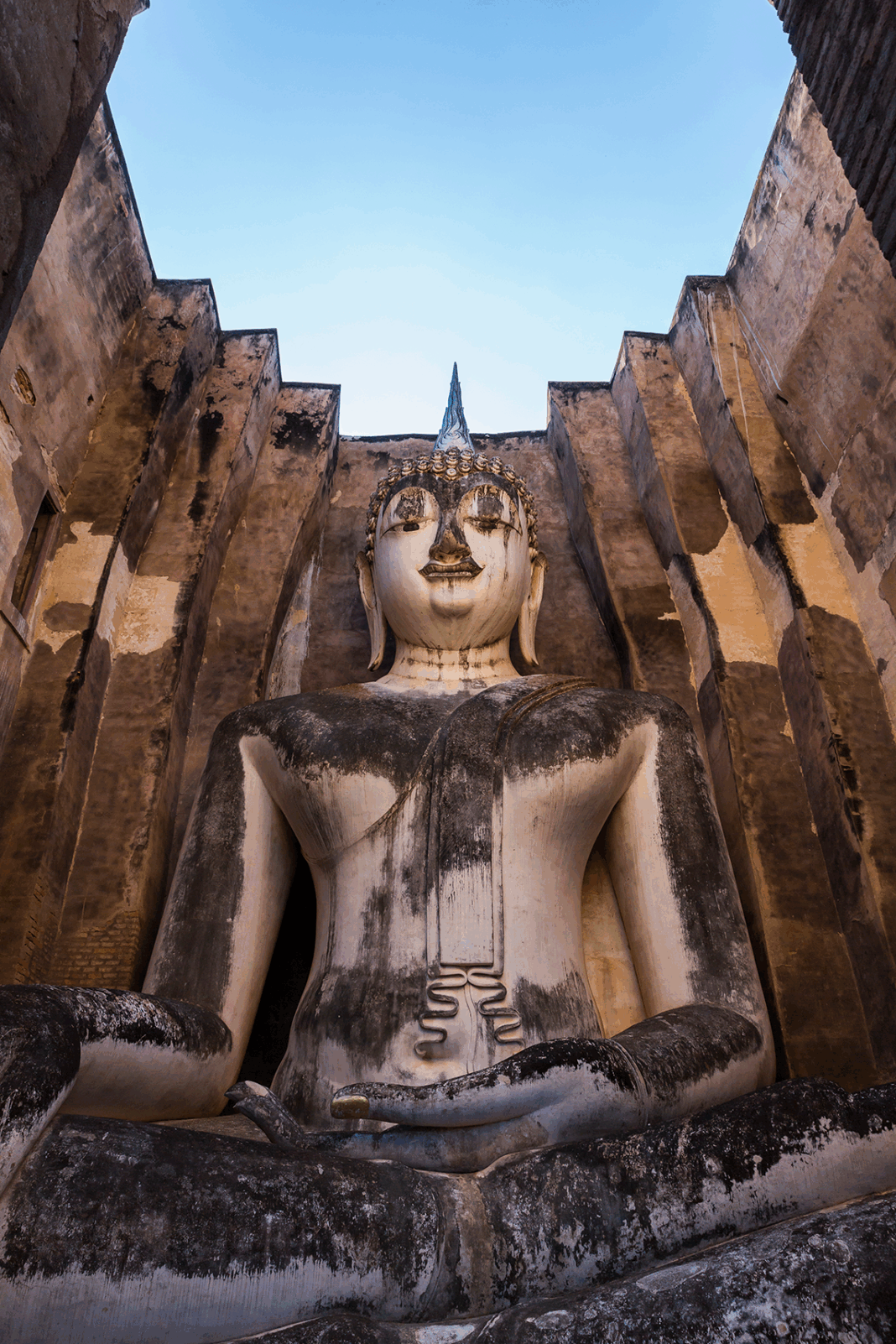Thailand’s UNESCO Heritage Treasure
Text and Photos by Mick Shippen
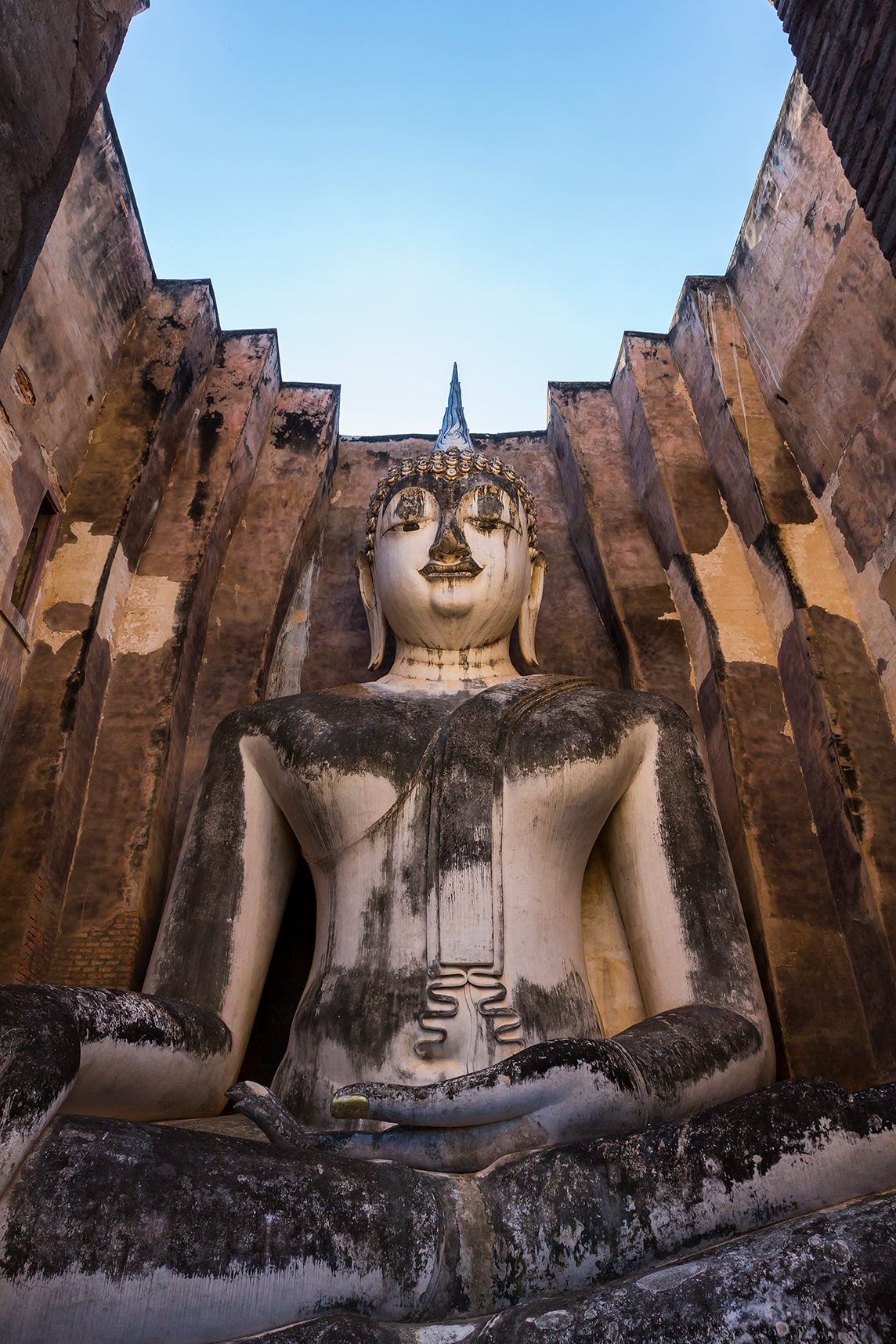
Thailand is scattered with fascinating archaeological sites and impressive temple ruins, but the jewel in the crown is Sukhothai.
Thailand’s Sukhothai period from 1238 to 1438 is regarded as the beginning of Thai history, and its rich legacy still resonates throughout present-day Thai culture. At its height, the kingdom is thought to have wielded dominance from Nakhon Si Thammarat in the south to Luang Prabang in northern Laos and Martaban in Myanmar. Historians consider Sukhothai to be the first true Thai kingdom, and with nine kings ruling over two centuries, it is a stable period of history. King Ramkhamhaeng, the second king, established a system of writing that became the basis for modern Thai script. The king also promoted Theravada Buddhism, which gave birth to classic forms of Thai religious art. The production of glazed ceramic wares was vital to the economy of Sukhothai. Pots from the many kilns just outside the city and in nearby Si Satchanalai were exported all over the region. To this day, sunken trade vessels in the Gulf of Thailand and in Malaysian waters continue to be discovered by marine archaeologists and reveal yet more secrets from the Sukhothai period.

Following the death of King Ramkhamhaeng, Sukhothai’s influence began to wane. The last king of Sukhothai, King Thammaracha, died in 1438, and the kingdom became a province within the now-dominant kingdom of Ayutthaya.
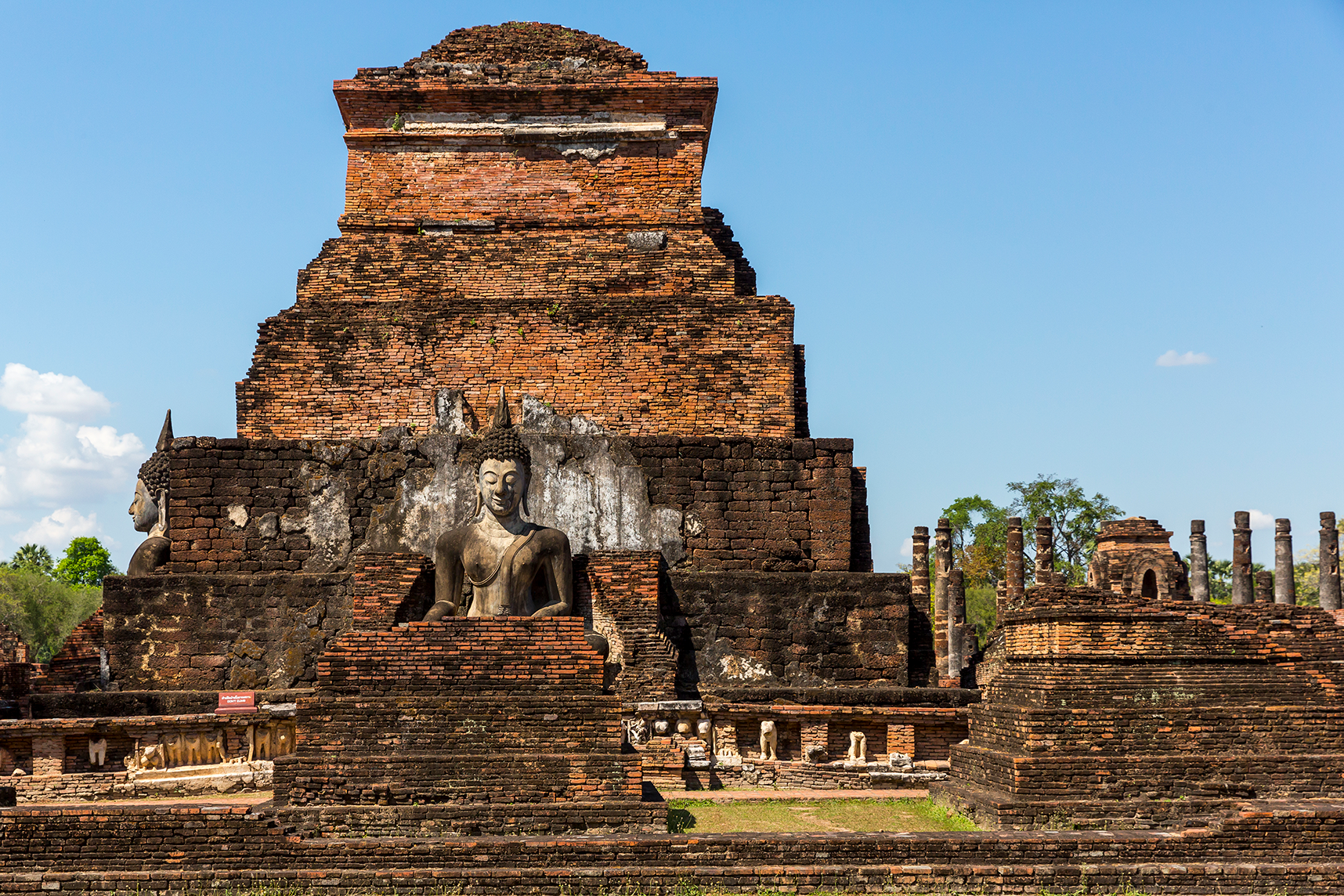
Sukhothai Historical Park
Home to magnificent temples, ruins, and monuments, the Sukhothai Historical Park is a UNESCO World Heritage Site and draws thousands of visitors every year. It covers over 7,000 hectares and is divided into five zones that can be explored by bicycle or electric buggy. The Ramkhamhaeng National Museum within the site gives visitors an interesting historical perspective and is a good starting point before exploring the park.
A moat surrounds the park’s central area and features 21 magnificent temples. The most dramatic is Wat Si Chum, located just outside the old city’s walls at the northwest corner. Approaching Wat Si Chum along the pathway, the face of the enormous Buddha within is first glimpsed through an opening in the front wall. The hand of the 15-meter high, 11-meter wide seated Buddha image is covered with gold leaf rubbed onto the fingers by the thousands of worshippers who pray before it.
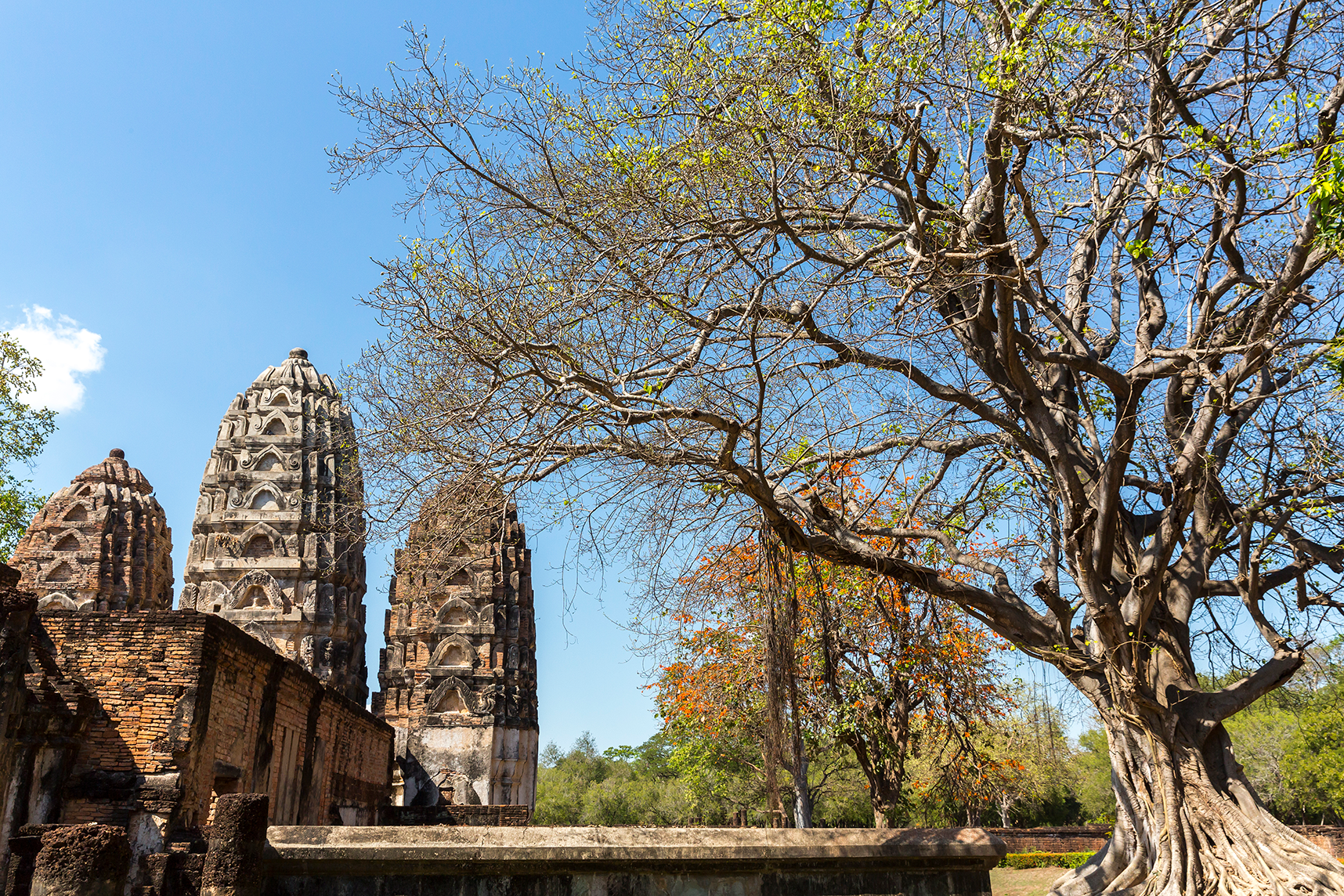
In November, on the night of the full moon, Sukhothai Historical Park hosts Thailand’s biggest Loy Kratong festival. It also occasionally holds light and sound events with music, dance, and fireworks.

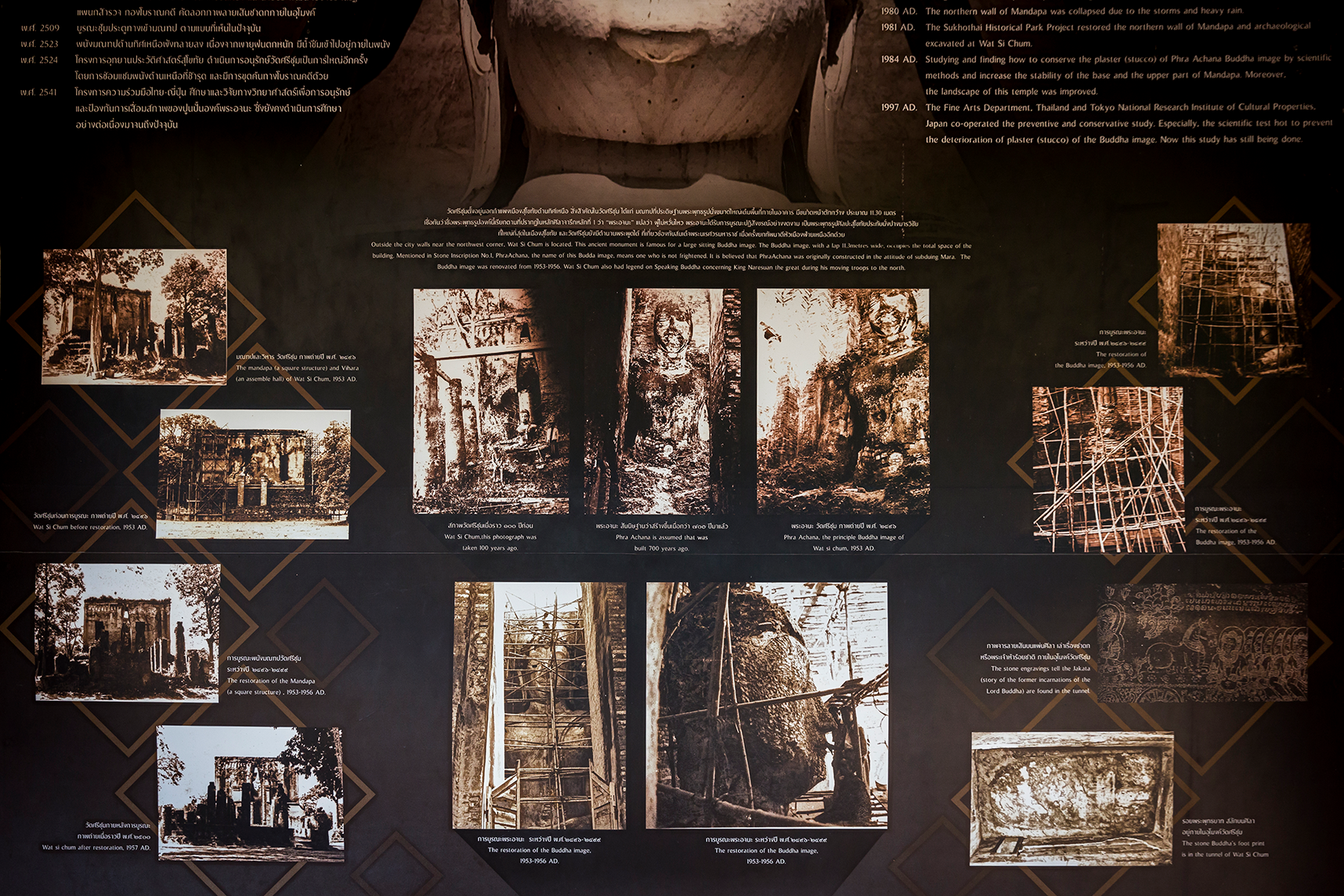
History buffs and culture vultures with more time to explore the region’s history can visit the smaller but equally compelling nearby ancient towns of Si Satchanalai (4,000 hectares) and Kamphaeng Phet (340 hectares). Located on the banks of the Yom River, Si Satchanalai was known as the spiritual heart of the Sukhothai kingdom and for producing exquisite ceramics that were exported throughout Southeast Asia, while Kamphaeng Phet (340 hectares) to the south was established as a defensive outpost. Highlights at Kamphaeng Phet Historical Park include Wat Chang Rop in the forest zone, adorned with 68 elephant statues that symbolize Thailand’s royal might, and a lovely little museum with a fine collection of well-displayed artifacts accompanied by informative text.



 ລາວ
ລາວ